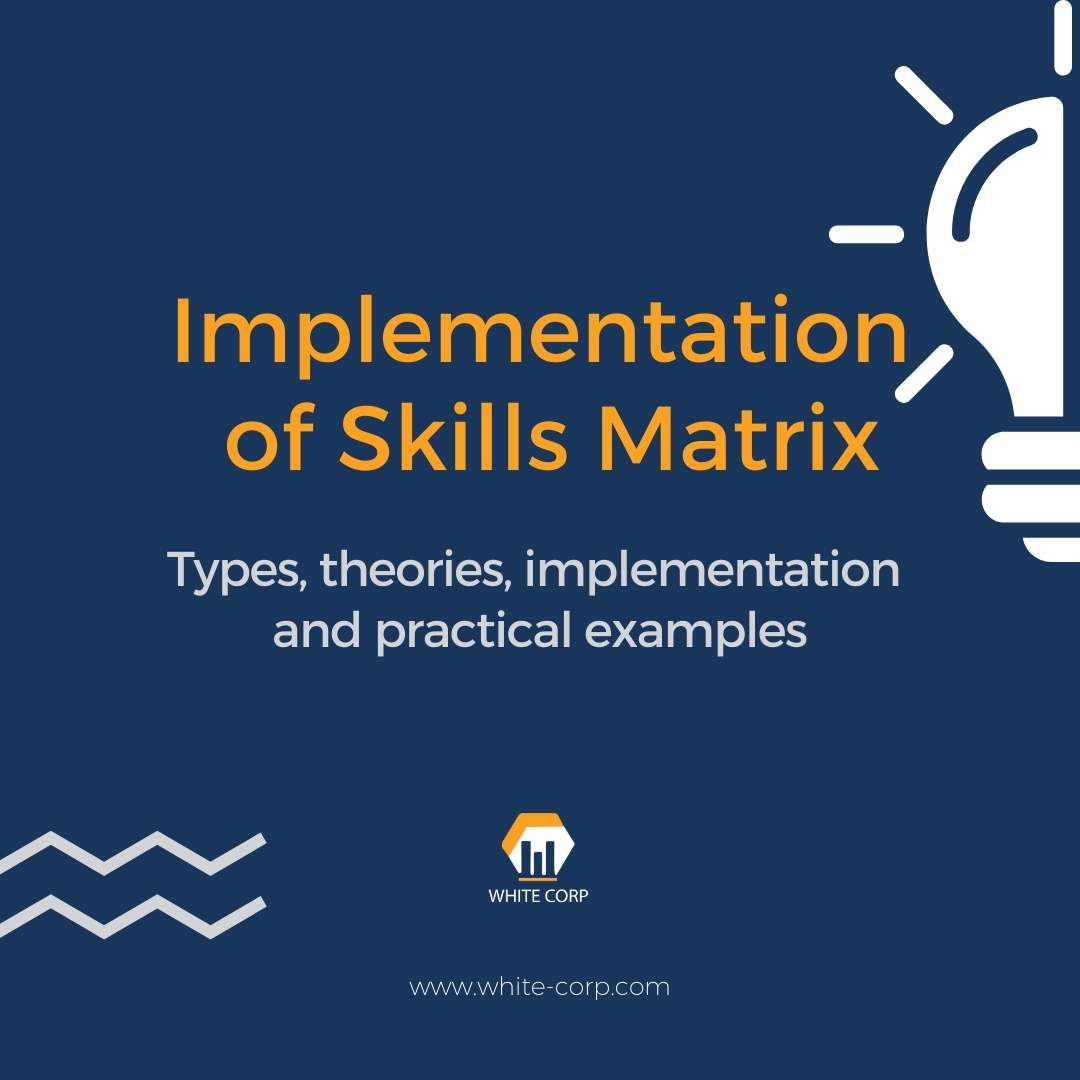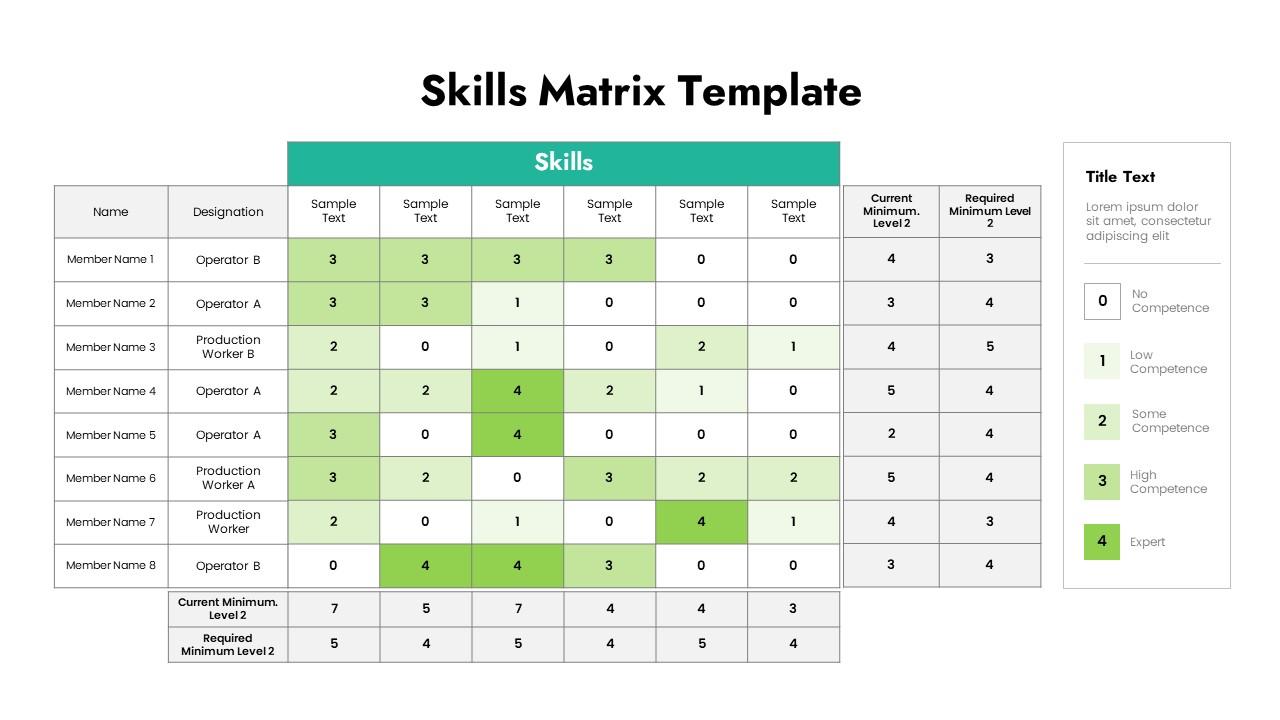Introduction
In today's fast-paced business world, having the right people with the right skills is crucial for success. That's where a skills matrix comes in. It's a valuable tool that can help organizations manage their employees' skills, identify gaps, and develop their workforce. By mapping employees' skills and their levels, a skills matrix provides information about available skills and their evaluation. This allows businesses to identify the comprehensive skill set, experience level, and general competence required for a position or project. In this article, we'll take an in-depth look at the importance of skills matrix in the workplace, its types, theories, implementation, and real-life examples.
Importance and benefits of Skills Matrix in the Workplace
1- Identify the Right People: A skills matrix allows managers to select the right people for the job, task, or project. It helps to form better and more productive teams and fill positions with the employees who are the best fit for that role. According to a study by McKinsey & Company, companies with diverse teams are 35% more likely to have financial returns above their industry average.
2- Identify Missing Competencies: Skills matrices help to determine what skill set is missing, whether within a team, department, or the company as a whole. If staff lacks certain knowledge or competencies that are necessary for the business, then the company is at a huge disadvantage. In 2021, the World Economic Forum's Future of Jobs Report found that the top emerging skills for the next five years include digital skills, critical thinking, and problem-solving.
3- Identify the Gap between Employees, Teams, and Departments: By using a skills matrix, businesses can identify employees with knowledge or skill gaps and provide the needed training, as employees rotate between crucial projects or teams. According to a study by Udemy for Business, 57% of employees believe that they don't have the skills needed to do their jobs effectively.
4- Track Employee Development: Skills matrices give the HR department information that they can use to determine what training is needed for employees. By using the skills matrix, they can identify training opportunities. It also helps employees to understand what their gaps are, so they can take action to gain the skill set they need to excel in their position. According to a report by LinkedIn, 94% of employees would stay at a company longer if it invested in their career development.
5- Help HR to Find the Right Candidate: If someone leaves the organization, it is easier to understand what skill set was lost and who needs to be hired when using a skills matrix. It speeds up the hiring process and helps the HR department to hire staff with needed skills, making it more efficient and providing a better end result. Also, it can be used for the future planning of new hires. According to a survey by Robert Half, 23% of HR managers say that the biggest challenge they face when hiring is identifying the right skills for the job.
6- Improve productivity: By identifying skills gaps and providing the necessary training, employees can become more productive and efficient in their jobs. This can lead to increased output and better results for the organization.
7- Better resource allocation: A skills matrix can help managers identify employees with specific skills or knowledge that are needed for a particular project or task. This can help to allocate resources more effectively and efficiently.
8- Improved employee engagement: Providing training and development opportunities can help to improve employee engagement and job satisfaction. This can lead to increased retention rates and a more positive work environment.
9- Better succession planning: By identifying the skills and knowledge required for different roles, a skills matrix can help with succession planning. This ensures that the organization has employees with the necessary skills to fill key positions if needed.
10- Enhanced decision-making: With a skills matrix in place, managers have access to data that can inform their decision-making. This can help to make more informed and strategic decisions about resource allocation, training, and development.
Types of Skills Matrix
- Basic Skills Matrix: This is a simple matrix that outlines the skills required for a specific role or department. It is used to identify gaps in the skills of employees and determine the training needed to fill those gaps. According to a study by the Society for Human Resource Management, 36% of organizations use skills matrices to identify skills gaps.
- Multi-Skill Matrix: This matrix is used to identify the skills required for multiple roles or departments. It is used to identify areas of cross-functional training that can help employees gain the skills needed to be successful in multiple roles. According to a study by Training Industry, 68% of organizations use cross-functional training to build a more agile workforce.
- Training Matrix: This matrix is used to identify the skills that employees need to complete their jobs and the training required to develop those skills. It is used to track employee progress and ensure that they have the skills and knowledge needed to be successful in their roles. According to a study by Brandon Hall Group, 77% of organizations use training matrices to track employee development.
Theories of Skills Matrix
- Competency Theory: This theory suggests that employees have a set of skills, knowledge, and behaviors that are essential for job performance. The skills matrix is used to identify these competencies and determine the training needed to develop them. According to a study by Deloitte, organizations that invest in their employees' development are 92% more likely to retain their employees.
- Capital Theory: This theory suggests that employees are an organization's most important asset. The skills matrix is used to identify the skills and knowledge needed to develop this asset and ensure that employees are equipped to perform their jobs at the highest level. According to a study by McKinsey & Company, companies that invest in their employees' development have 1.5 times more engaged employees.
- Resource-Based Theory: This theory suggests that an organization's resources, including its employees, can be a source of competitive advantage. By using a skills matrix, businesses can ensure that their employees have the necessary skills to perform their jobs at the highest level, giving them a competitive edge in the market. According to a study by PwC, companies with highly skilled employees are 2.5 times more likely to be top performers in their industry.
Implementation of Skills Matrix
- Define the Required Skills: Create a skill database and list the skills required for the role, department, or project. Group these skills into different categories and subcategories. This can be done using software such as Excel or specialized HR tools.
- Create a Grading System: Define how you will grade the skills. For example, Junior, Middle, or Senior could be levels of competence. This will help to standardize the evaluation process and make it easier to compare employees' skill levels.
- Evaluate Employees' Skills: Use self-evaluation, manager evaluation, team or client evaluation, skills assessment, or certification to evaluate employees' skills. This will provide a comprehensive picture of each employee's skill set and help to identify areas for improvement.
- Define a Potent Skill Loss Threat: Determine which skills are critical to the organization and visualize the threat of losing those skills. This will help to prioritize training and development efforts and ensure that the organization is prepared for any potential skill gaps.
Real-Life Examples
* Amazon uses a skills matrix to track the skills of their employees and identify areas for improvement. They use the data collected from the skills matrix to design training programs that help employees develop the skills and knowledge needed to be successful in their roles. As a result, they have one of the most skilled workforces in the world, with an emphasis on digital skills and customer service.
* The United States Air Force uses a skills matrix to identify the skills needed for different roles and determine which employees have those skills. They use the data collected from the skills matrix to plan training programs that develop the skills of their workforce and ensure that they have the skills needed to perform their jobs at the highest level. This has helped them to maintain their position as one of the most technologically advanced and well-trained air forces in the world.
* A study by McKinsey & Company found that 87% of executives said that they were experiencing skill gaps within their workforce, and 60% said that these gaps were negatively affecting their productivity. By using a skills matrix, businesses can bridge these gaps and ensure that employees have the necessary skills to perform their jobs at the highest level.
In conclusion, a skills matrix is a valuable tool for any organization that wants to manage their employees' skills, identify gaps, and develop their workforce. By using a skills matrix, businesses can ensure that they have the right people in the right positions, identify areas for improvement and development, and plan for future training needs. Whether it's a basic skills matrix, multi-skill matrix, or training matrix, the key is to define the required skills, create a grading system, evaluate employees' skills, and determine the potential skill loss threat. With these steps in place, businesses can use the skills matrix to track employee development, identify missing competencies, and improve the overall performance of their workforce. By investing in their employees' development, businesses can gain a competitive edge in the market and ensure their long-term success.
.png)

